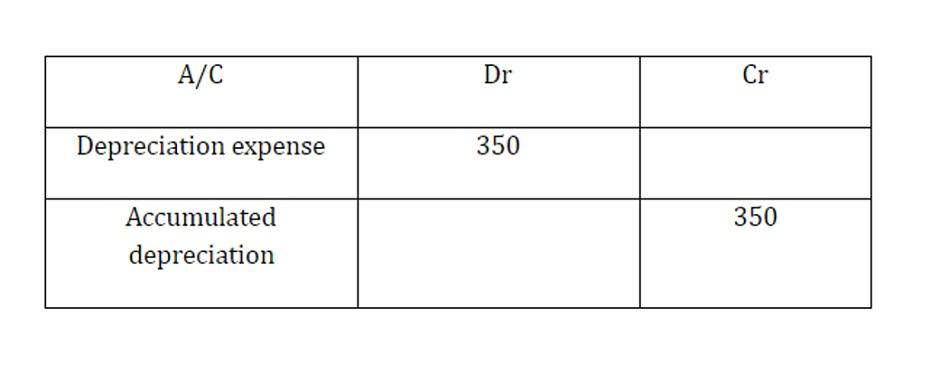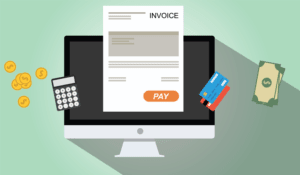
Our writing and editorial staff are a team of experts holding advanced financial designations and have written for most major financial media publications. Our work has been directly cited by organizations including Entrepreneur, Business Insider, Investopedia, Forbes, CNBC, and many others. Our goal is https://www.bookstime.com/ to deliver the most understandable and comprehensive explanations of financial topics using simple writing complemented by helpful graphics and animation videos.
- By analyzing this variance, the company can identify potential inefficiencies, investigate the underlying causes, and take corrective actions to improve productivity and reduce costs.
- Instead, they’re more about keeping the business running smoothly and supporting its overall operation.
- It indicates the percentage of each sales dollar that translates into profit after deducting all expenses.
- Net Profit provides a comprehensive measure of the business’s profitability and financial performance, indicating the amount of profit generated after deducting all costs and expenses.
- Product and period costs take part in the financial story, influencing the bottom line and revealing the business’s financial health.
- It’s like finding the right balance to make good products and keep the entire business in good shape.
Accounting for Managers
- As a general rule, costs are recognized as expenses on the income statement in the period that the benefit was derived from the cost.
- Therefore, by calculating the fixed cost per unit, businesses can evaluate the impact of fixed costs on their profitability and make informed decisions regarding production levels and pricing strategies.
- This means that for every dollar invested, there is a 25% return or gain.
- Period costs help the management understand the burden of cost that a firm is facing irrespective of whether the company is working or not, earning any profit or not.
ROA is used to assess how effectively a company is utilizing its assets to generate profit. https://www.facebook.com/BooksTimeInc/ It provides insights into the efficiency of asset management and the overall profitability of the business. A higher ROA indicates better utilization of assets and higher profitability, while a lower ROA suggests inefficiencies or lower profitability relative to the company’s asset base. ROA is widely used by investors, creditors, and financial analysts to evaluate the financial performance and potential returns from investing in a company.
Commonly used Standard Cost Variance calculations:
Conversely, a negative efficiency variance suggests that fewer resources were utilized than planned, potentially indicating increased efficiency and cost savings. Efficiency variance analysis helps businesses identify opportunities for process improvement, optimize resource allocation, and enhance productivity and cost-effectiveness. A positive cost variance indicates that the actual cost is higher than the budgeted cost, suggesting a cost overrun. Conversely, a negative cost variance would indicate cost savings or that the actual cost is lower than the budgeted cost.

Identifying Period Costs
Overhead Allocation refers to the process of assigning or distributing indirect costs (overhead) to specific products, services, or cost centers within an organization. If you manufacture a product, these costs would include direct materials and labor along with manufacturing overhead. Most of the components of a manufactured item will be raw materials that, when received, are recorded as inventory on the balance sheet.


By accurately recording and reporting these expenses, companies can avoid potential issues with tax authorities and minimize the risk of penalties or audits. When you differentiate period costs from others, you’re breaking down your expenses to provide insights about where your money is going. From there, you can make decisions that will make your business more profitable.
Variable Cost (VC) per Unit
Both of these costs are considered period costs because selling and administrative expenses are used up over the same period in which they originate. Examples of product costs include the cost of raw materials used, depreciation on plant, expired insurance on plant, production supervisor salaries, manufacturing supplies used, and plant maintenance. Both product costs and period costs may be either fixed or variable in nature. Tracking period costs is essential for businesses to ensure compliance with tax regulations.
Just-In-Time: History, Objective, Productions, and Purchasing
It is important for businesses to carefully manage fixed costs to maintain financial stability and achieve profitability. The Net Profit formula is used to determine the overall profitability of a business after considering all expenses incurred during a specific period. It reflects the amount of money left over after deducting all costs and expenses from the total revenue.

What is the benefit of classifying costs as products or periods?
Pre-determined period costs don’t include historical and current period costs. A liability is defined as something that a company owes to somebody else. Liabilities are normally things that are settled over time through the transfer of money, goods, or services. Liabilities can either be short-term obligations that are due within one year of a normal accounting period, or they can be long-term liabilities and are not due for more than one accounting period. By definition, period costs are costs that are incurred during one accounting period and are not tied to the production of a product or the inventory costs. If liability is short-term and due within one accounting period and is not directly tied to the production of a product or inventory costs, then it could be considered a period cost.
Why Is Overhead a Period Cost?
- It is a crucial factor in determining the minimum required rate of return on investments to create value for shareholders.
- What is paid during that period was $100,000 in rent and utilities, but only $10,000 in insurance and property taxes because a storm damaged the roof of one of its properties.
- When your business takes a loan, it makes regular payments of principal and interest.
- These costs occur when defects or quality issues are detected after delivery to customers.
- Knowing total period costs enhances the accuracy of business tax filings, as it allows for precise documentation of deductible expenses.
- Pre-determined period costs include expenses that companies estimate for a future period.
The standard costs that a business incurs that are not directly related to production operations or inventory costs but total period costs formula still must be added to their income statement are known as period costs. Therefore, the Conversion Cost for the furniture manufacturing company in that period is $70,000. This represents the total cost incurred in converting raw materials into finished goods, excluding the cost of raw materials themselves.